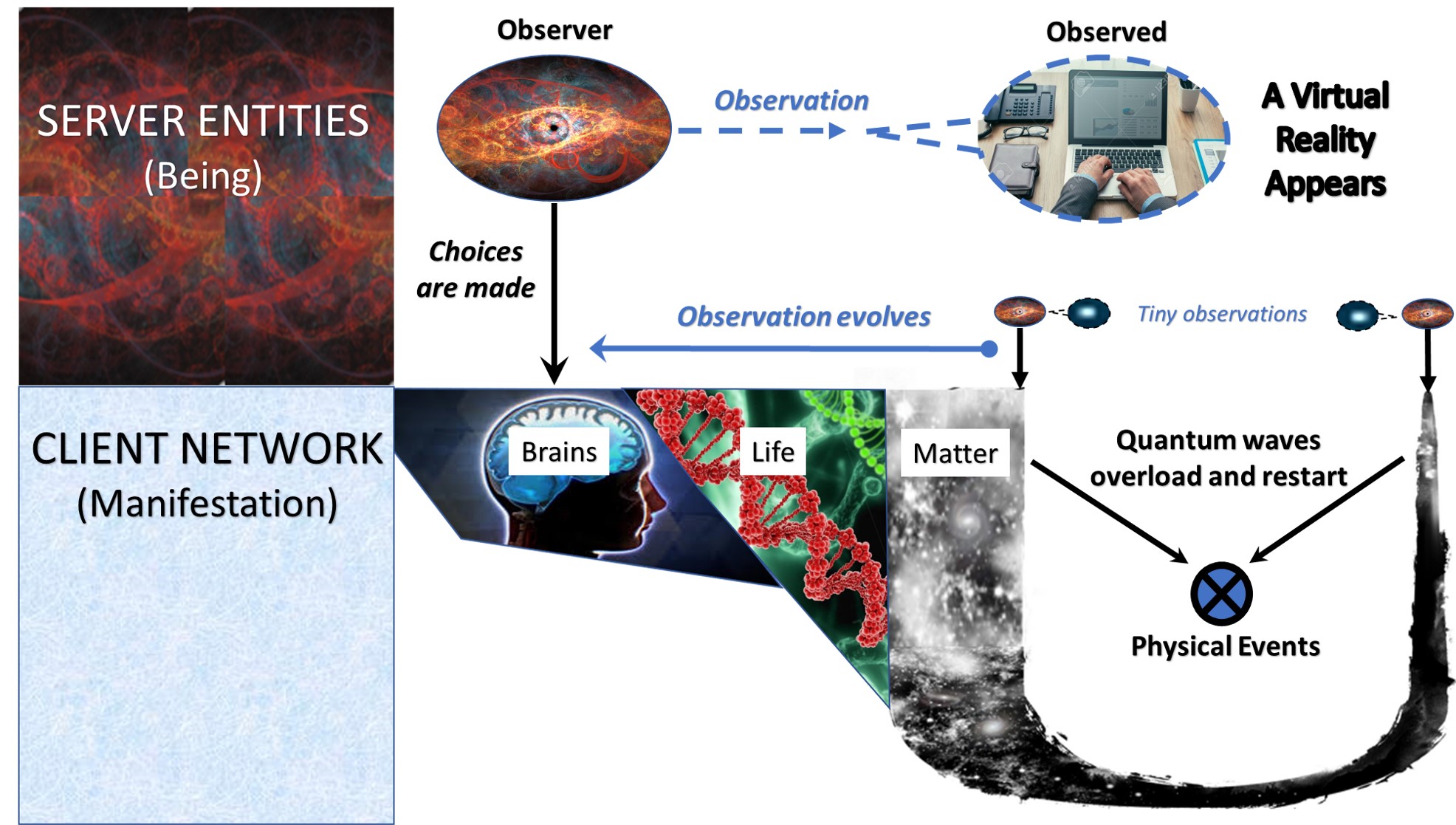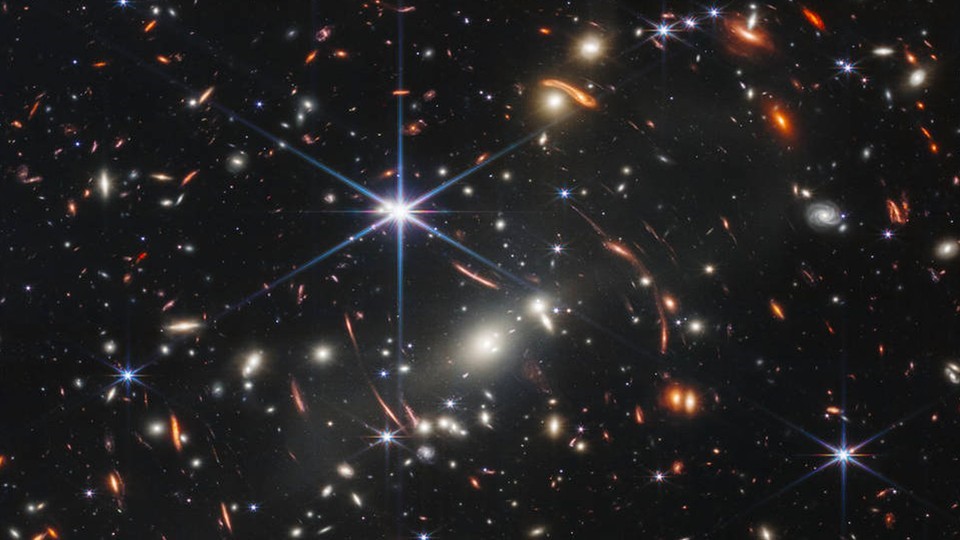Observation occurs when a quantum wave collapses in a physical event that restarts it again. Quantum theory needs observation to trigger physical events, so the first to observe our universe was its first creation – light. Observation occurred before matter or information existed, so they couldn’t cause it. If quantum theory is true, then observation is fundamental to our universe.
A photon of light also chooses where it hits a screen from its wave distribution. Physics calls it random, as if it had no value, but if this choice also underlies our attention, it is worth having. If we choose, why can’t a photon? Rather than explain when choice began, it is simpler to say that photons choose on an infinitesimal scale, so choice is also fundamental to our universe.
Light is a stream of photon quanta, but what makes a quantum unit? Physical waves that spread and dissolve back into the sea aren’t units but photon waves are because they spread and restart. A photon wave that can spread over a galaxy then restart at a point is an entity.
What then is a photon? Quantum waves that collapse and disappear before a physical event can’t decide where the wave restarts, so something else must do that. And if the speed of light doesn’t fade, something else must generate its waves. Let us call that something else being, where an entity’s being is how it exists. If a photon’s being generates its quantum waves and chooses where they restart, it can also observe physical events, as they can’t observe each other. If a photon’s being chooses and observes, then being is what observes and chooses, a definition that also works for human beings.
A photon is immortal because, like the phoenix, it rises again from the ashes of its collapse, but if what observes in us ends when the brain dies, we aren’t. Yet if the photon is an infinitesimal being, all later beings could derive from this primal ground by entanglement.
In this view, our universe began when a quantum entity passed its activity to others to make a single photon in a unit of space. The “big bang” that followed was a blast of light that continued until expanding space stopped it. Quantum realism proposes that this “rip” was a server-client relation, a computing term for one source activating another. For example, when a laptop prints a document, it is a server that makes its client printer print pages. It is also a server to its client screen. If a photon is a server manifesting waves on a client network, the wave can be restarted, just as a laptop reboot can restart a screen that hangs. This division separated quantum reality into:
1. Server entities, that generate quantum waves and restart them, and a
2. Client network, where quantum waves lawfully interact in physical events.
This isn’t dualism, that two realities exist, because one reality divided into server and client. We call it being and manifestation, where being is what exists and manifestation is what is observed. Quantum reality divided into manifestation and being, where this division operates as follows:
1. Server entities generate quantum waves that spread on the client network.
2. Quantum waves interact to overload a client node in a physical event.
3. The physical event restarts the quantum entities involved at the same point.
4. Restarting at the same point entangles them to share information in an observation.
5. What is observed is generated, so it is virtual.
For example, when electrons meet, their quantum waves overlap until an overload restarts and entangles them as an entity that spreads waves again until another physical event disentangles them. Being the same entity lets them observe each other at that moment, so observation has a quantum origin. Countless quantum events cause each physical event, so it is just a snapshot of reality, like a camera that takes a photo every million years or so.

Figure 6.41 expands Wheeler’s universal eye to include the observer. It divides quantum reality into server and client, which for us is being and manifestation. The realm of manifestation is the client network that we call physical space. The realm of being is what generates and restarts quantum waves, and where observation and choice occur.
Initially, tiny physical events gave tiny observations but over time the universe (U in the figure) observed more by finding entanglements that survived. Most entanglements collapse quickly but some survived as electrons, quarks, atoms, molecules, and macro-molecules like RNA. Each step in the evolution of matter increased the beings that observed.
When the vibrations of tubulins kept entanglements going longer, millions of molecules were able to form a cell that can observe and choose as one. Simple cells led to complex cells, then plants, until animal brains managed to cascade synchronies, to increase observation still further. The result was sentient beings like us, that can think about the world and experience it as beings.
Evolution expanded the left of the U in Figure 6.41. Part of a universe of light became matter, some matter became life, and some life became sentient. Most of the universe isn’t sentient, but the trend to observe more is clear. It drives matter to become life and life to become sentient. And now, billions of years later, we can see the scale of what is going on (Figure 6.42). We are beings that observe other being’s manifestations by means of our own, but where is the observer that does that?
